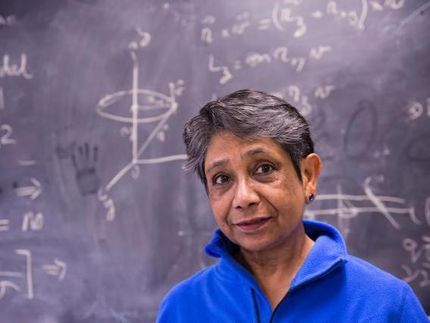Scientists discover long-sought Higgs decay
Detectors at the world's largest collider LHC at CERN prove Higgs decay into two b quarks
Scientists from the two major particle physics experiments ATLAS and CMS at CERN have observed the Higgs boson decaying into two b-quarks, they announced at a joint seminar at CERN today. According to theory, far more than half of all Higgs particles decay into these two quarks, but it is extremely difficult to filter out this process from the many other things that happen when particles collide in the Large Hadron Collider (LHC). This result is another confirmation of the theory that describes all particles and forces and proof that the Higgs particle does indeed give mass to elementary particles. DESY researchers played key roles in the search.
Quarks are the fudamental constituents of all atomic nuclei. They come in six different kinds. The matter we know consists of up and down quarks, but there are also strange, charm, bottom and top quarks that can for example be produced in particle accelerators. The discovery of the Higgs boson at the Large Hadron Collider (LHC) in 2012 marked the final missing piece of the standard model of particle physics. By studying the properties of the Higgs boson physicists hope to better understand how it gives mass to other elementary particles.
"In the particle collisions in the LHC, countless b-quark pairs are generated by all kinds of processes. This makes it so difficult to filter out exactly those ones that were generated through the decay of a Higgs," explains DESY’s Kerstin Tackmann, who leads the Higgs working group within the international ATLAS research collaboration, "In order to increase the Higgs signal in comparison to the other processes, we used signatures such as the production of the Higgs boson in conjunction with messenger particles of the weak interaction".
"We have finally discovered the most frequent decay of the Higgs particle," says DESY scientist Rainer Mankel, who heads the working group studying Higgs decays into two b-quarks within the international CMS collaboration. "This results strongly supports the theory that the Higgs boson gives mass to elementary particles, which is impressively reflected in the strength of its interaction with the heaviest quark it can decay into." His DESY colleagues Adinda de Wit and Heiner Tholen have crucially advanced the CMS analysis. Many subtle improvements and intensive teamwork made it possible to observe this decay.
Particle physics is detective work, since very few particles are recorded directly, most can only be identified by the different particles into which they decay. A large data set also helps here: the LHC has already produced more data than expected during its runtime so far. The more data the researchers have available, the clearer a signal becomes, which could otherwise be lost in noise. The scientists want to know exactly how quarks and Higgs particles interact with each other. This this makes it easier to understand the process that gives mass to elementary particles. On the other hand, any anomaly in the behavior of the particles, any deviation from the underlying theory, could be an indication of something new and unexpected.
At the beginning of LHC operation it was not even clear whether the two large detectors CMS and ATLAS could make these measurements, but both the collider and the detectors regularly exceed performance expectations. What is more, the analysis techniques have been significantly enhanced, for example with complex algorithms based on machine learning. The result is also a success of the research groups of German universities, which were responsible for the construction and operation of precision detector components, especially the pixel vertex detector at CMS or the silicon pixel detector at ATLAS.
In the coming years, both detectors and accelerators will be upgraded to increase the particle collision rate to a record level of over 5 billion proton-proton collisions per second from 2026. With the significantly higher collision rate and the new detectors, the precision of the measurements can be significantly improved in the future.
Organizations
Other news from the department science

Get the chemical industry in your inbox
By submitting this form you agree that LUMITOS AG will send you the newsletter(s) selected above by email. Your data will not be passed on to third parties. Your data will be stored and processed in accordance with our data protection regulations. LUMITOS may contact you by email for the purpose of advertising or market and opinion surveys. You can revoke your consent at any time without giving reasons to LUMITOS AG, Ernst-Augustin-Str. 2, 12489 Berlin, Germany or by e-mail at revoke@lumitos.com with effect for the future. In addition, each email contains a link to unsubscribe from the corresponding newsletter.



























































